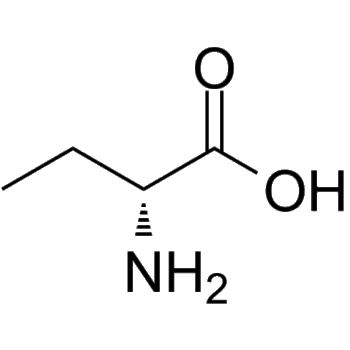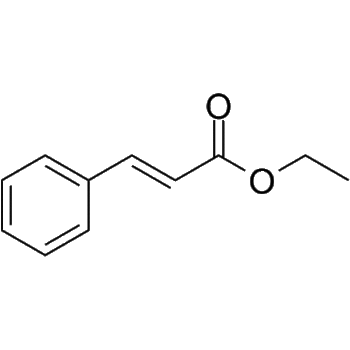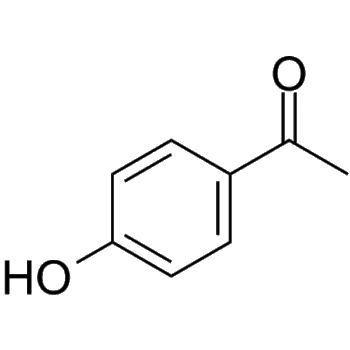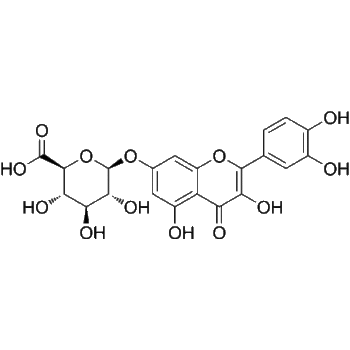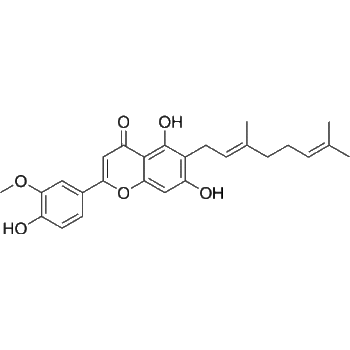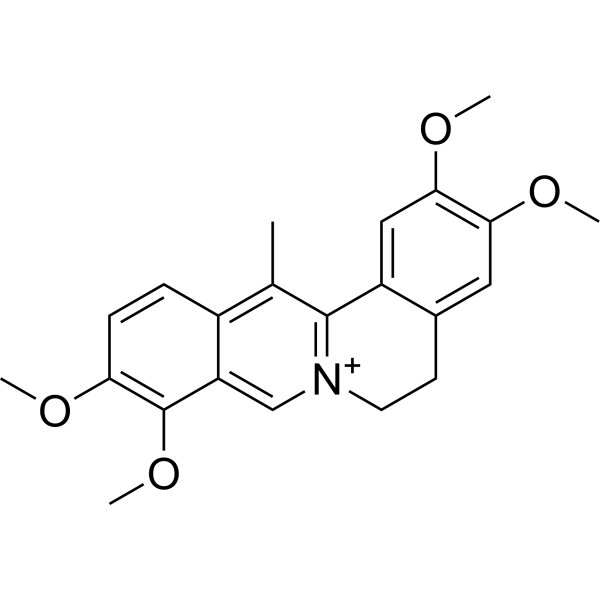
Download Files:
Dehydrocorydaline
$66 – $200
Products Details
Product Description
– Dehydrocorydaline (13-Methylpalmatine) is an alkaloid that regulates protein expression of Bax, Bcl-2; activates caspase-7, caspase-8, and inactivates PARP[1]. Dehydrocorydaline elevates p38 MAPK activation. Anti-inflammatory and anti-cancer activities[2]. Dehydrocorydaline shows strong anti-malarial effects (IC50=38 nM), and low cytotoxicity (cell viability > 90%) using P. falciparum 3D7 strain[3].
Web ID
– HY-N0674
Storage Temperature
– -20°C, 3 years; 4°C, 2 years (Powder)
Shipping
– Room Temperature
Applications
– Neuroscience-Neurodegeneration
Molecular Formula
– C22H24NO4+
Citations
– Bioengineered. 2022 May;13(5):12847-12862.|Exp Eye Res. 2022 Dec 25;109365.|Front Pharmacol. 31 May 2021.|J Inflamm Res. 2021 Sep 16;14:4669-4686.|Phytomedicine. 8 September 2021, 153740.|Tissue Cell. 2023 Sep 11, 102218.|Aging (Albany NY). 2021 Oct 7;13(19):23133-23148.|Aging. 2021 May 11;13(9):12780-12799.|Biochem Biophys Res Commun. 2018 May 23;499(4):743-750. |Biochem Biophys Res Commun. 2018 Sep 5;503(2):467-473. |BMC Musculoskelet Disord. 2022 May 30;23(1):514.|Bone Joint Res. 2023 Nov 1;12(11):677-690.|Comput Math Methods Med. 2021 Aug 2;2021:3337514.|Eur J Pharmacol. 2021 Mar 31;174069.|Infect Genet Evol. 2021 Nov 23;105158.|J Agric Food Chem. 2023 Oct 12.|J Cell Physiol. 2019 Dec;234(12):22463-22476.|J Clin Neurosci. 2020 Aug;78:365-370.|J Mol Histol. 2021 Feb 8.|J Nutr. 2020 Jul 1;150(7):1731-1737.|Research Square Preprint. 2020 Dec.
References
– [1]Xu Z, et al. Dehydrocorydaline inhibits breast cancer cells proliferation by inducing apoptosis in MCF-7 cells. Am J Chin Med. 2012;40(1):177-85.|[2]Yin ZY, et al. Antinociceptive effects of dehydrocorydaline in mouse models of inflammatory pain involve the opioid receptor and inflammatory cytokines. Sci Rep. 2016 Jun 7;6:27129.|[3]Yoo M, et al. Dehydrocorydaline promotes myogenic differentiation via p38 MAPK activation. Mol Med Rep. 2016 Oct;14(4):3029-36.|[4]Nonaka M, et al. Screening of a library of traditional Chinese medicines to identify anti-malarial compounds and extracts. Malar J. 2018 Jun 25;17(1):244.
CAS Number
– 30045-16-0
Molecular Weight
– 366.43
Compound Purity
– 99.77
SMILES
– CC1=C(C=CC(OC)=C2OC)C2=C[N+]3=C1C4=CC(OC)=C(OC)C=C4CC3
Clinical Information
– No Development Reported
Research Area
– Cancer; Infection
Solubility
– DMSO : 25 mg/mL (ultrasonic)
Target
– Autophagy;Bcl-2 Family;Caspase;p38 MAPK;Parasite;PARP
Isoform
– Bax;Bcl-2;Caspase 7;Caspase 8;PARP;Plasmodium
Pathway
– Anti-infection;Apoptosis;Autophagy;Cell Cycle/DNA Damage;Epigenetics;MAPK/ERK Pathway
Product type
– Natural Products
Disclaimer: All products are for Research use only unless clearly stated otherwise on the product datasheet. Datasheets provided on the website are drafts for reference purpose only and you are requested to always refer to the hard copy included in the kit for your experimentation. Agdia Products are available for delivery only in Canada.
